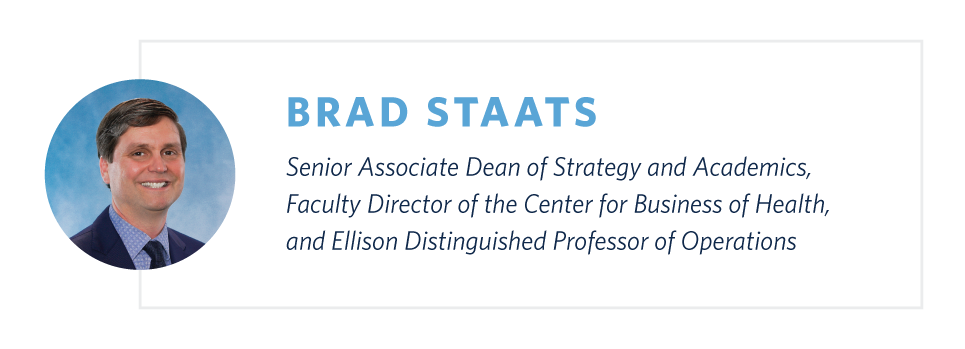Thought Leadership
3 Tips for Overcoming Failure and Learning from Your Mistakes

Failure is inevitable. This truth is especially uncomfortable in today’s business environment in which disruption, fierce competition, and razor-thin margins for error are often the norm rather than the exception.
Yet even though failure is psychologically painful and can expose us to tangible losses, it is nevertheless valuable. “When we open ourselves to failure, we invite entirely new possibilities for learning,” explains UNC professor Brad Staats in his book Never Stop Learning: Stay Relevant, Reinvent Yourself, and Thrive. To that end, Brad offers insights on how we can mitigate our fear of failure by reframing our inevitable mistakes as opportunities to learn by experimenting with the different and the new.
Fear of Failure
Our fear of failure is deeply ingrained, so much so that our physiological responses to failure can mirror our responses to physical pain. Moreover, we all possess deep-seated cognitive biases that can prevent us from learning from our mistakes. These include difficulty recognizing that failure is a normal part of life, overestimating the negative consequences of our potential failures, and a tendency to blame our failures on external causes rather than our own deficiencies.
Continual learning is imperative in a business environment characterized by change. And as Brad reminds us, “if we never do anything different, our ability to gain further knowledge will be limited at best.” It is therefore critical for each of us to strive toward overcoming the cognitive and behavioral challenges that limit our ability to learn from our inevitable missteps.

3 Tips for Learning from Failure
Even though we are naturally hard-wired to not learn from our mistakes, Brad assures us that “it is possible to transcend our limitations when it comes to failure and learning.” These three tips can help you bypass the cognitive blind spots that we all share and in turn help you learn from your mistakes.
1) Embrace transparency
Sharing our struggles is crucial. According to Brad, “talking about failures, both to ourselves and to others, makes it possible to normalize the learning behavior.”
2) Rethink the status quo
Failure often exposes us to tangible losses, which biases us toward preferring the “safety” of the status quo. However, Brad points out that “identifying the uncertainties of not learning, along with the many gains to be made by trying new activities, is an absolute requirement.”
3) Neutralize excuses and ambiguity
A natural response to failing is to soothe our bruised egos by either blaming the failure on external forces beyond our control or denying that the failure has even occurred. However, we can counteract these cognitive biases by asking others to hold us accountable. Similarly, we can leverage objective data when evaluating how well we are performing rather than subjective assumptions or “gut feelings.”
Transforming Failure into Lasting Learning
Our deep-seated aversion to failure creates psychological barriers that often prevent us from learning from our mistakes. However, acknowledging these barriers can help us take steps toward overcoming them. Sharing our struggles, reframing how we think about the status quo, and holding ourselves accountable can help us transform our fear of failure into experimentation, discovery, and lasting learning.
In his book Never Stop Learning: Stay Relevant, Reinvent Yourself, and Thrive, UNC professor Brad Staats provides more insights on dynamic learning. He also provides practical, proven strategies for overcoming barriers to learning as an essential skill for surviving in today’s volatile business environment.
